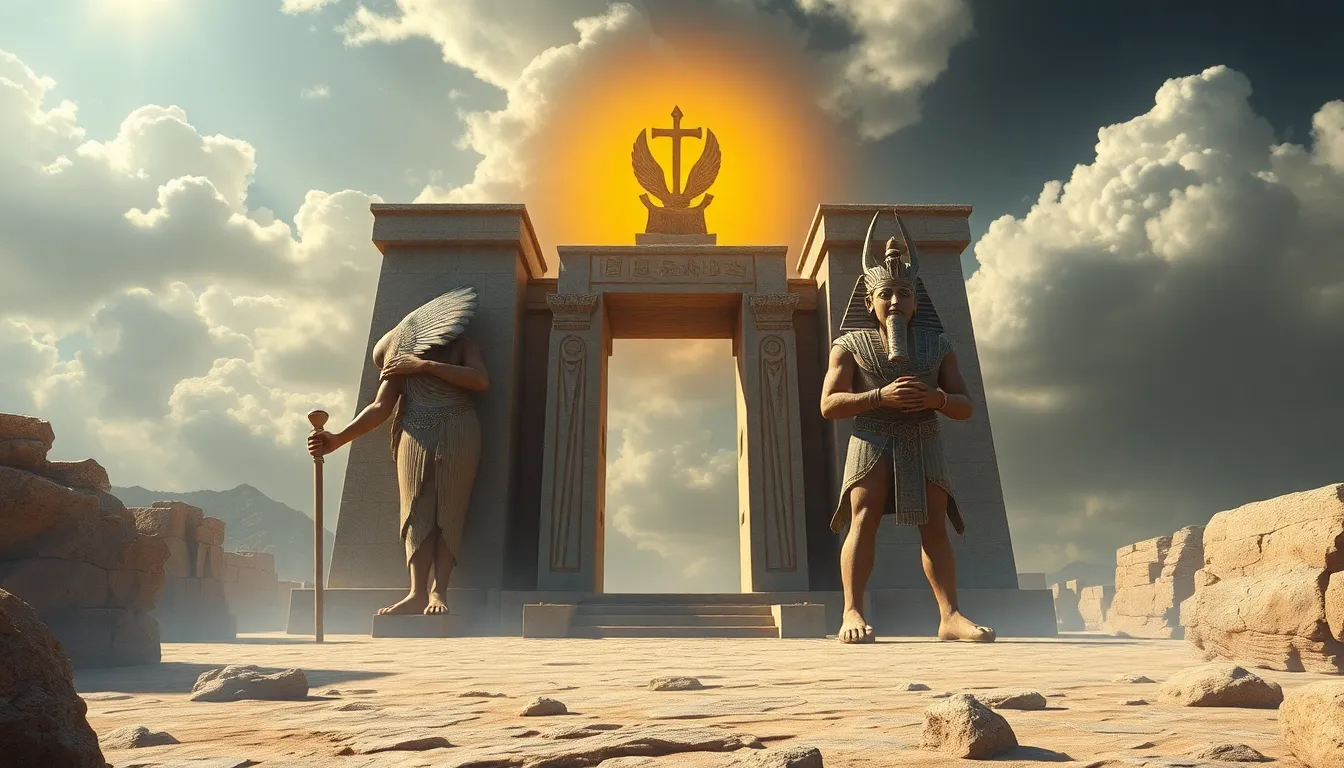The Divine Order of Egyptian Gods: A Journey Through Mythology
I. Introduction
Egyptian mythology is a rich tapestry woven from the beliefs, rituals, and stories of ancient Egypt. It comprises a complex pantheon of gods, each representing various aspects of life, nature, and the cosmos. The importance of these deities in ancient Egyptian culture cannot be overstated, as they were integral to the civilization’s understanding of the world and their place within it. This article aims to explore the hierarchy and roles of the Egyptian gods, diving deep into their creation myths, significant narratives, and their lasting impact on modern culture.
II. The Creation Myth: Origins of the Gods
Egyptian creation myths vary across different regions and periods, with two primary stories emerging as the most prominent: the Heliopolitan and Memphite narratives.
- Heliopolitan Creation Myth: This myth centers on Atum, the creator god, who emerged from the primordial waters of chaos, known as Nun. Atum created the first gods, Shu (god of air) and Tefnut (goddess of moisture), who in turn birthed Geb (the earth) and Nut (the sky), leading to the creation of the Ennead.
- Memphite Creation Myth: In this version, Ptah is the creator god who brought the universe into existence through thought and speech. He conceived the world and the gods in his heart and spoke them into being.
The emergence of gods from chaos illustrates a fundamental belief in ancient Egyptian cosmology: order (Maat) arising from chaos (Isfet).
III. The Twelve Major Gods of the Egyptian Pantheon
The Egyptian pantheon is vast, but twelve principal deities play particularly significant roles in mythology:
- Ra: The sun god, often depicted with a falcon head, symbolizing the sky and kingship.
- Osiris: God of the afterlife, agriculture, and resurrection; central to beliefs about life after death.
- Isis: Goddess of magic, motherhood, and fertility; known for her role in the resurrection of Osiris.
- Horus: God of the sky and kingship, often associated with the pharaohs.
- Set: God of chaos, storms, and the desert; often depicted as the antagonist in many myths.
- Anubis: God of mummification and the afterlife, depicted with a jackal head.
- Thoth: God of wisdom, writing, and knowledge; often portrayed as a baboon or ibis.
- Hathor: Goddess of love, joy, and music; represented as a cow or a woman with cow horns.
- Sekhmet: Warrior goddess and protector, associated with healing and destruction.
- Bastet: Goddess of home, fertility, and domesticity, often depicted as a lioness or a domestic cat.
- Nut: The sky goddess who envelops the earth and protects the dead.
- Geb: God of the earth, often depicted lying beneath Nut.
IV. The Hierarchical Structure of the Gods
The structure of the Egyptian pantheon reflects a divine kingship, with Ra often considered the foremost deity and the creator of other gods. The relationships among the deities are complex, involving familial ties, rivalries, and alliances.
- Divine Kingship: The pharaoh was believed to be the living embodiment of Horus, maintaining Maat (order) against Isfet (chaos).
- Relationships: For instance, Osiris is the brother and husband of Isis, while Set is both his brother and adversary. This duality reflects the balance of good and evil in the universe.
V. Mythological Narratives and Their Influence
Key myths within Egyptian mythology serve to explain natural phenomena and the human experience, particularly concerning life, death, and the afterlife.
- The Story of Osiris: Osiris’s death and resurrection symbolize the cycle of life and agricultural fertility, emphasizing the belief in life after death.
- The Battle Between Horus and Set: This epic struggle represents the ongoing conflict between order and chaos, ultimately leading to Horus’s victory and the restoration of Maat.
VI. Temples and Worship: The Cult of the Gods
The worship of Egyptian gods was a communal affair, centered around elaborate temples that served as the homes of the deities.
- Major Temples: The Temple of Karnak and the Temple of Luxor are among the most significant, dedicated to Amun-Ra, showcasing the architectural grandeur of ancient Egypt.
- Rituals and Offerings: Daily rituals included offerings of food, incense, and prayers, aimed at appeasing the gods and ensuring balance in the cosmos.
- The Role of Priests: Priests acted as intermediaries between the gods and the people, performing rituals and maintaining the temples.
VII. The Legacy of Egyptian Gods in Modern Culture
The impact of Egyptian mythology extends beyond its historical context, influencing contemporary art, literature, and popular culture.
- Art and Literature: Egyptian themes are prevalent in numerous works of art, from classical literature to modern films and novels.
- Continued Reverence: There is a growing interest in ancient beliefs, with many people exploring neo-pagan practices that honor the gods of ancient Egypt.
- Comparative Analysis: The stories and characters of Egyptian mythology bear similarities to other mythologies, such as Greek and Roman, highlighting universal themes of creation, death, and rebirth.
VIII. Conclusion
In summary, the divine order of the Egyptian gods reflects a complex and sophisticated understanding of the world that was central to ancient Egyptian culture. The pantheon, with its rich narratives and intricate relationships, illustrates the ancient Egyptians’ quest for meaning and order amidst chaos. As we reflect on the enduring nature of these myths, it is clear that the legacy of Egyptian mythology continues to captivate and inspire, reminding us of the deep connections humans share across time and culture.




